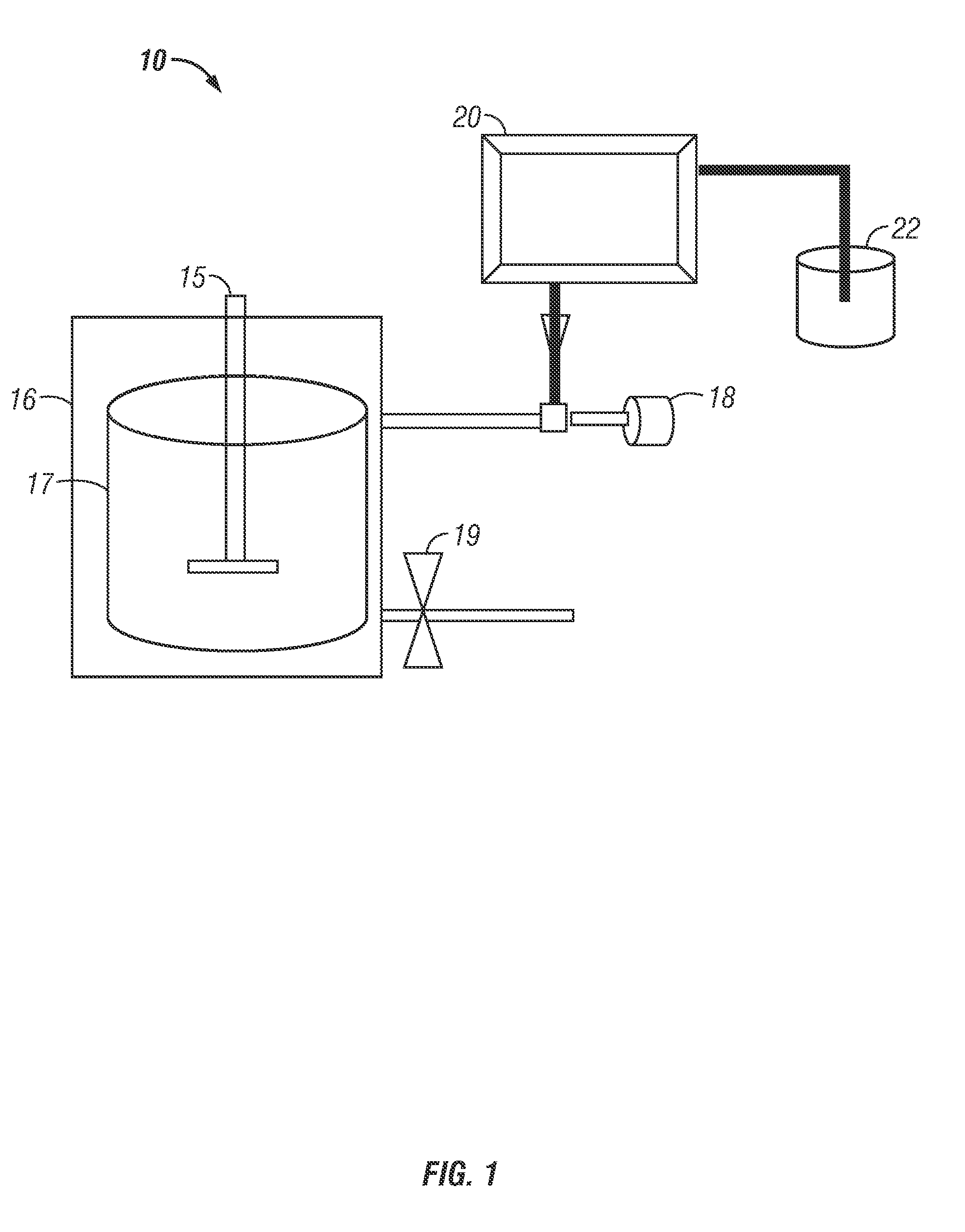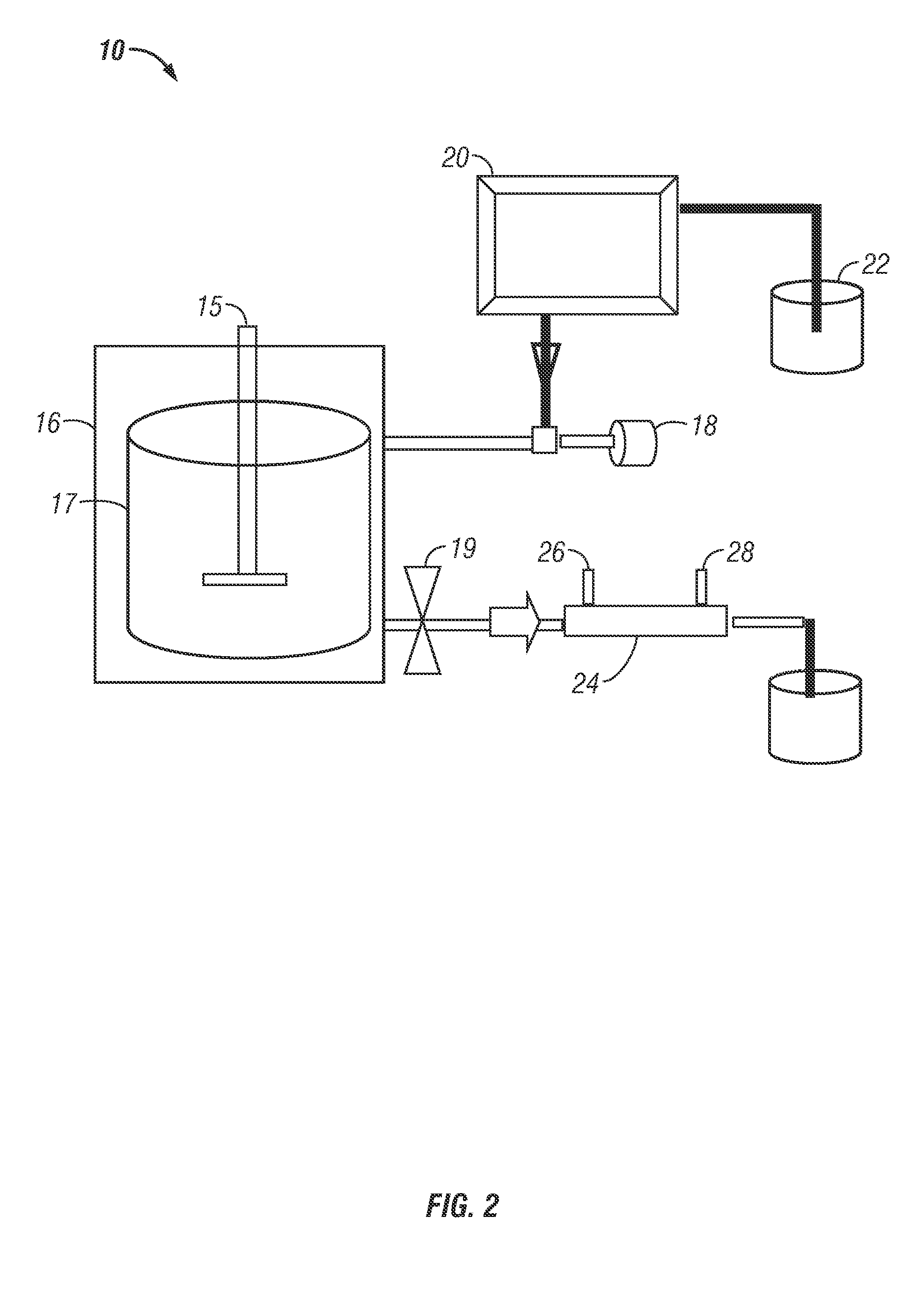Novel method for the conversion of cellulose and related carbohydrate materials to low-molecular-weight compounds
a carbohydrate material and low-molecular weight technology, applied in the preparation of carbonyl compounds, oxygen compounds purification/separation, heterocyclic compounds, etc., can solve the problems of low conversion efficiency, low biomass conversion rate, and significant dependence on petroleum
- Summary
- Abstract
- Description
- Claims
- Application Information
AI Technical Summary
Benefits of technology
Problems solved by technology
Method used
Image
Examples
example 1
[0074]Reaction of cellulose and 2-propanol: A magnetic stirring bar, a 3 g quantity of cellulose, and 150 mL of a mixture of 5% water in 2-propanol were placed in a 300 mL stainless steel reactor (fitted with a pressure gauge and rated to hold pressures up to 4200 psi). The reactor top was bolted on, and the reaction chamber was flushed with argon and then closed. The reaction vessel is then heated. The vessel and contents should be heated to temperatures from 275° C. to 375° C. for a period of time from 30 minutes to several hours. The vessel is also exposed to high pressure conditions, such that the pressure of the reaction chamber reaches from 1500 to 3500 psi. According to a preferred method, the vessel is heated to 325° C. and held at that temperature for at least 1 hour to bring the pressure of the 325° C. chamber to approximately 2000 psi.
[0075]The reaction vessel is then allowed to cool to room temperature, and gas samples are collected from the reaction vessel. The top of t...
example 2
[0080]For several runs, the recovery of the carbon from the carbohydrate material was greater than approximately 80%. The various materials utilized include the following:
MaterialsMaterialSourceCellulose, Avicel-PH200FMC CorporationCellulose, 20 micronSigma-AldrichXylan (oat spelt)Sigma-Aldrich2-propanol, HPLC gradeFisher-ScientificD-glucose, ACS gradeFisher-ScientificStarchFisher-ScientificXyloseFisher ScientificFilter paper, groundWhatman Inc.Fructose (99%)commercial sampleOak flourlocal (BECON)Dried Distiller's Grainlocal (BECON)and Solubles (DDGS)Corn Stoverlocal (BECON)EthanolAAPERMethanolFisher-ScientificSucroseFisher-Scientific
[0081]Various low-molecular-weight alcohols, in addition to 2-propanol, were utilized in this procedure to convert cellulosic materials to low-molecular-weight compounds, including for example ethylene glycol and propylene glycol. Such low-molecular-weight alcohols include, but are not limited to, 1-propanol, 1-butanol, 2-butanol and ethanol.
[0082]A sum...
example 3
[0083]Various batch reactions using the Materials of Example 2 were completed. Table 2 presents the yields of products according to the methods of the invention generated from several simple sugars. In these runs aqueous solutions of the sugar at room temperature were pumped into the hot alcohol under pressure.
TABLE 2Reaction of 2-Propanol / Water with SugarsaProducts:bGlucoseGlucoseFructoseSucroseethylene glycol0.2680.3290.2090.225propylene glycol0.0620.0710.0820.051glycerol0.0630.0760.0830.071isopropyl glycolatec0.0360.0380.0290.026isopropyl acetated———0.019hydroxyacetone0.0860.0920.1160.066methanol0.0640.0800.1210.063Sedimente0.0010.0010.0000.002Unidentified productsf0.1460.1520.1460.262Total productsg0.5790.6850.6380.521Acetoneh0.5180.6190.6210.529aall reactions in 2-propanol / 5% waterball yields given in grams per gram starting materialcisopropyl ester tentatively assigned as isopropyl glycolatedisopropyl ester tentatively assigned as isopropyl acetateeunidentified products not so...
PUM
| Property | Measurement | Unit |
|---|---|---|
| Temperature | aaaaa | aaaaa |
| Temperature | aaaaa | aaaaa |
| Time | aaaaa | aaaaa |
Abstract
Description
Claims
Application Information
 Login to View More
Login to View More - R&D
- Intellectual Property
- Life Sciences
- Materials
- Tech Scout
- Unparalleled Data Quality
- Higher Quality Content
- 60% Fewer Hallucinations
Browse by: Latest US Patents, China's latest patents, Technical Efficacy Thesaurus, Application Domain, Technology Topic, Popular Technical Reports.
© 2025 PatSnap. All rights reserved.Legal|Privacy policy|Modern Slavery Act Transparency Statement|Sitemap|About US| Contact US: help@patsnap.com



